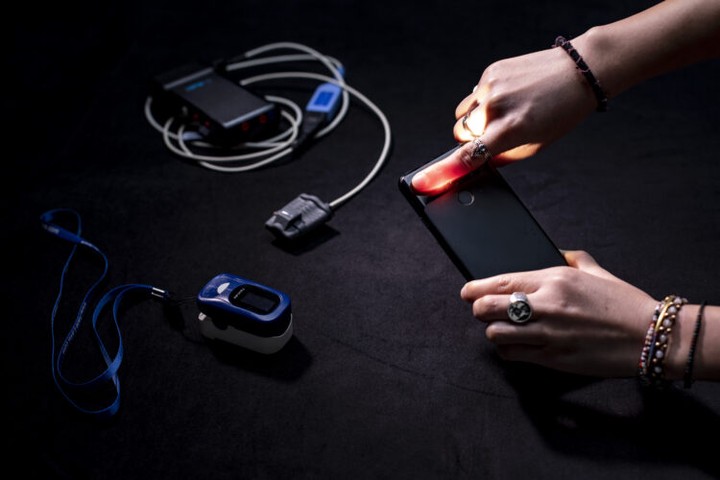 With these results, we can start to imagine replacing purpose-built medical devices, such as pulse oximeters, with software running on the phone using its more general-purpose sensors. Image credit:
Dennis Wise/University of Washington
With these results, we can start to imagine replacing purpose-built medical devices, such as pulse oximeters, with software running on the phone using its more general-purpose sensors. Image credit:
Dennis Wise/University of WashingtonAbstract
Hypoxemia, a medical condition that occurs when the blood is not carrying enough oxygen to adequately supply the tissues, is a leading indicator for dangerous complications of respiratory diseases like asthma, COPD, and COVID-19. While purpose-built pulse oximeters can provide accurate blood-oxygen saturation (SpO2) readings that allow for diagnosis of hypoxemia, enabling this capability in unmodified smartphone cameras via a software update could give more people access to important information about their health. Towards this goal, we performed the first clinical development validation on a smartphone camera-based SpO2 sensing system using a varied fraction of inspired oxygen (FiO2) protocol, creating a clinically relevant validation dataset for solely smartphone-based contact PPG methods on a wider range of SpO2 values (70–100%) than prior studies (85–100%). We built a deep learning model using this data to demonstrate an overall MAE = 5.00% SpO2 while identifying positive cases of low SpO2 < 90% with 81% sensitivity and 79% specificity. We also provide the data in open-source format, so that others may build on this work.